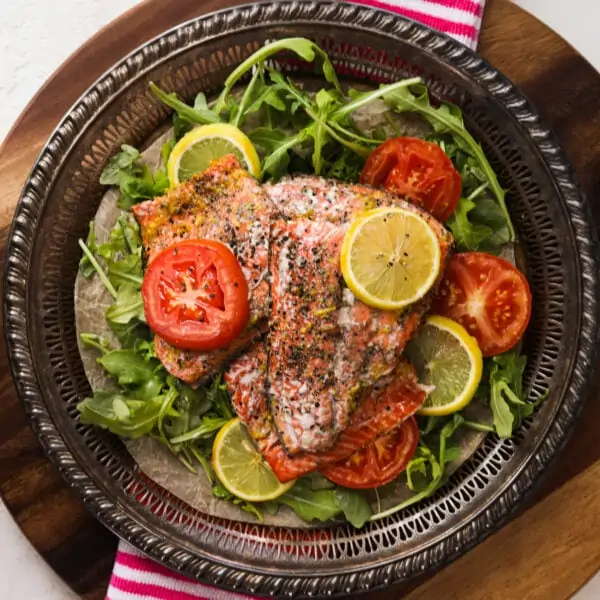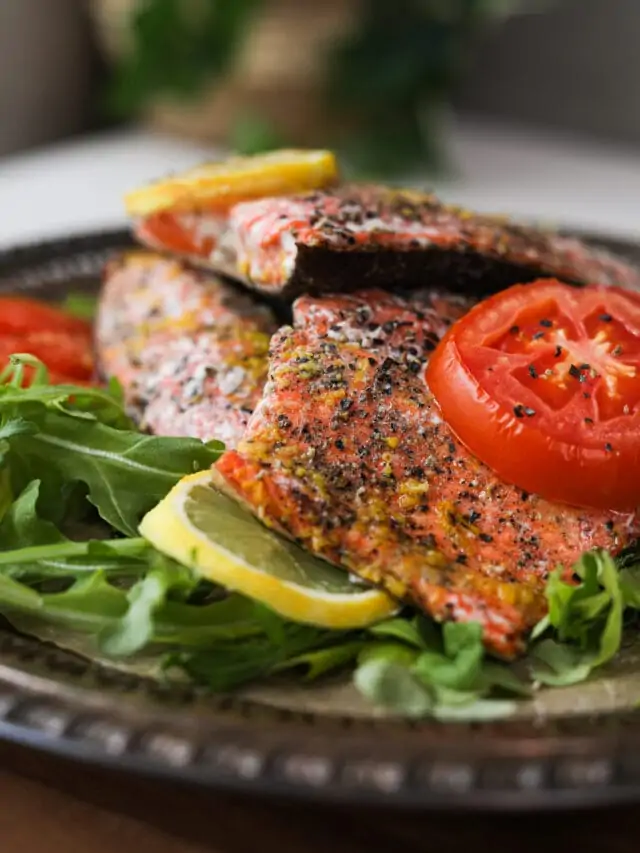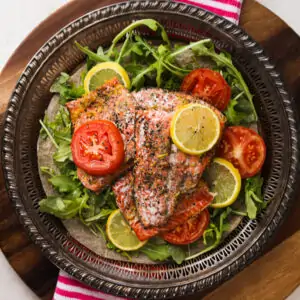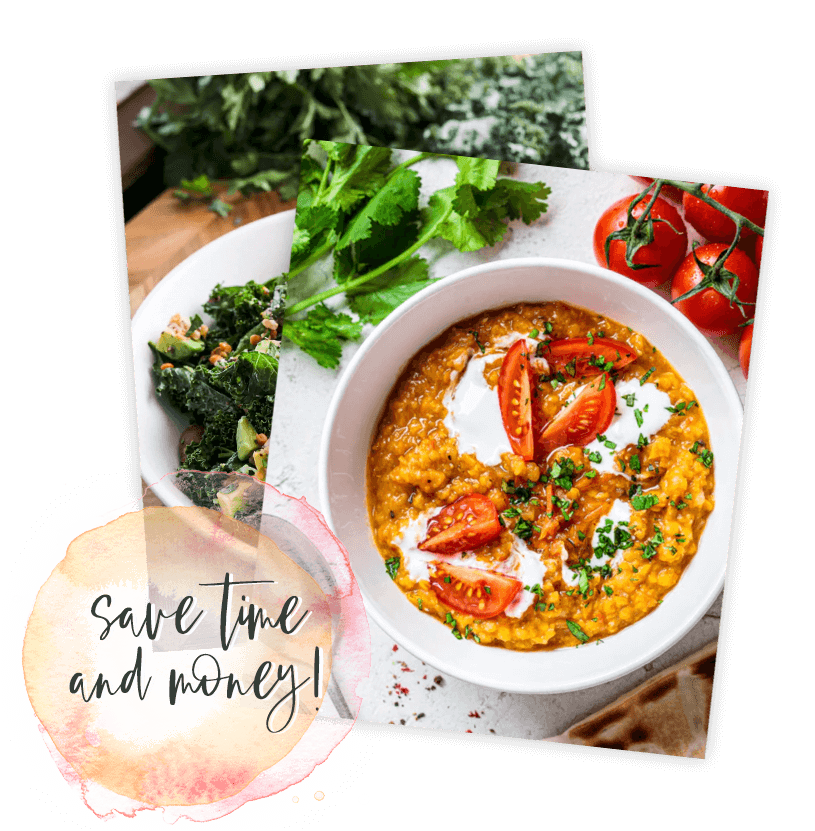This post was sponsored by The Marine Stewardship Council. As always, all opinions are my own.
In just 20 minutes, you can have this succulent lemon pepper salmon on your dinner table. The zesty flavour of lemon pairs perfectly with the pungent bite of pepper, creating a delightful dish sure to please your taste buds. And best of all, this recipe pairs wonderfully with a variety of sides to create balanced nutritious meals. So whether you’re in the mood for a light and refreshing dish or a hearty and satisfying feast, this lemon pepper salmon will not disappoint! High protein, diabetes diet friendly, and heart healthy.
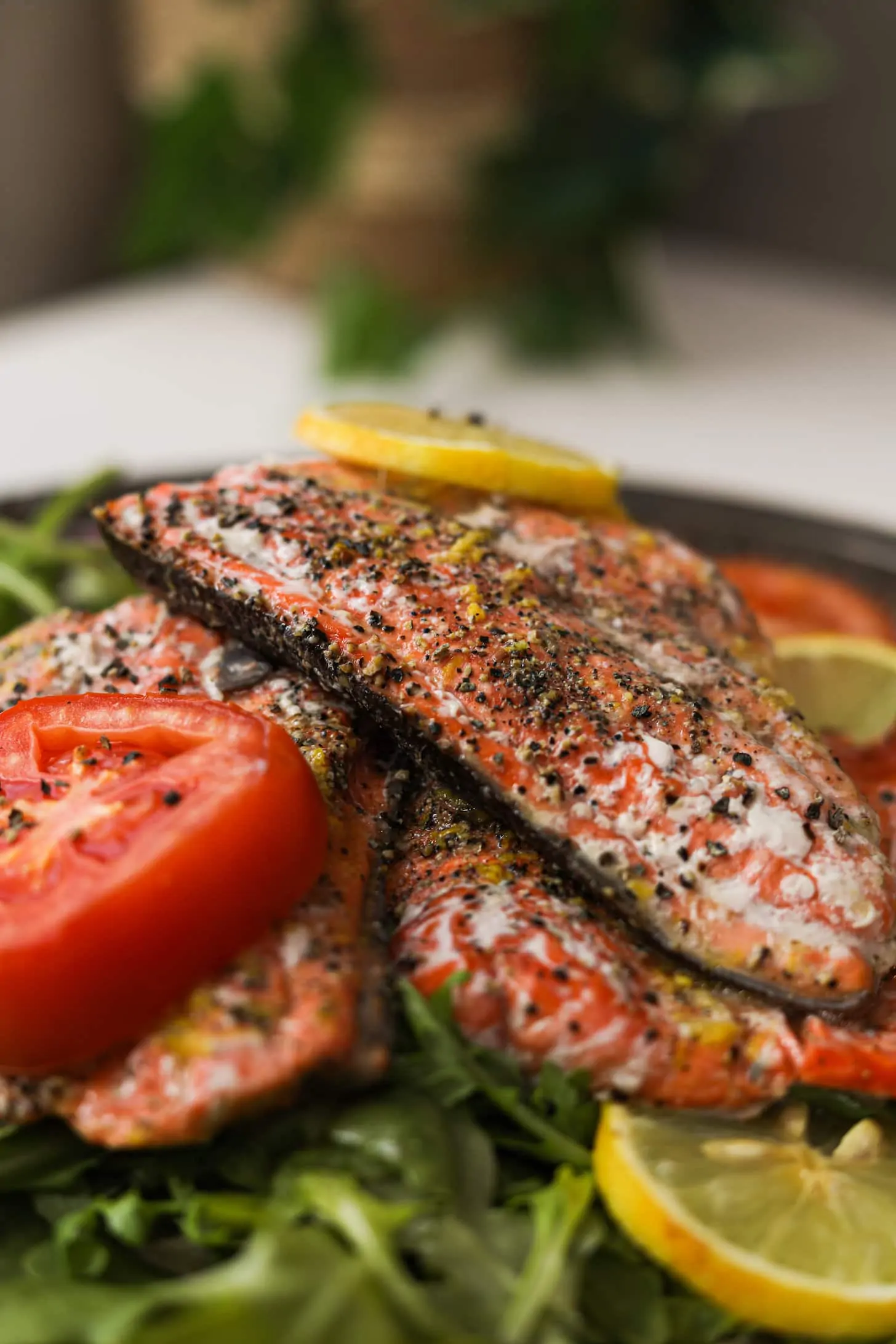
Is salmon good for health?
As a registered dietitian and certified diabetes educator, I know I’m not the only one who boasts about the health benefits of salmon. In fact, the American Heart Association recommends eating fish (preferably oily fish rich in omega-3 healthy fats) at least two times per week.
When it comes to diabetes, however, the data appears to be a bit more inconsistent. While some studies show that eating fish can improve blood sugar control, other studies have found no such benefit for type 2 diabetes management.
For example, a review of 83 randomized trials involving more than 120,000 people revealed that increased consumption of omega-3 fats had no effect on blood sugar control or diabetes risk.
Although more research is needed, one meta-analysis showed that eating omega-3 fats improved kidney function and cholesterol levels in folks with diabetes.
Furthermore, the anti-inflammatory effects of omega-3 fats may be beneficial for those with diabetes because inflammation contributes to type 2 diabetes development and progression.
So what does this all mean?
Although the correlation between blood sugar and omega-3 fats isn’t direct, research does show that they play a role in diabetes prevention and managing related co-morbidities, such as high cholesterol levels, and heart disease.
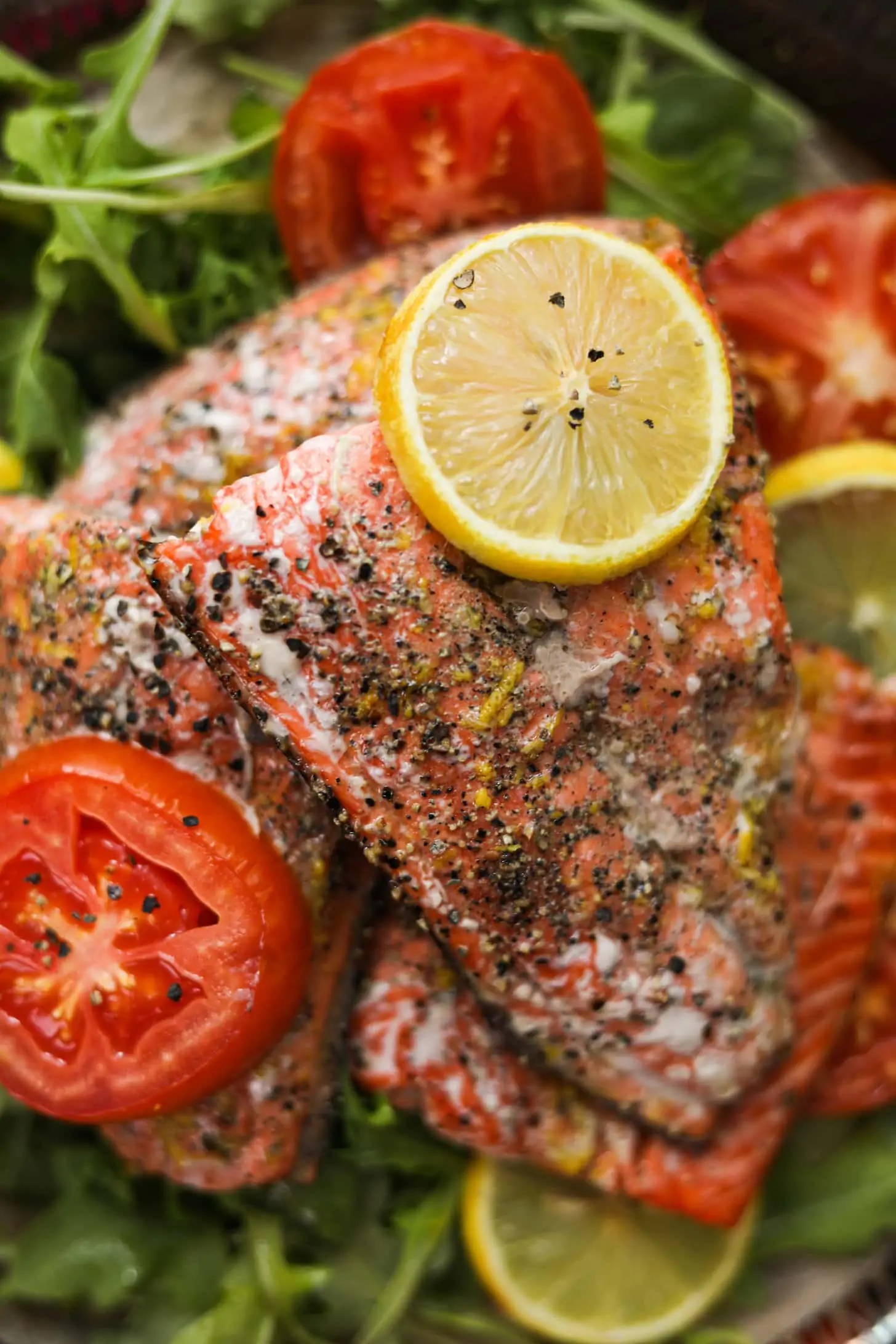
Salmon nutrition facts
Salmon is a nutritionally dense food, providing high-quality protein and a variety of vitamins and minerals. It’s of the few foods that contain vitamin D, which is important for health. A 100-gram portion of wild sockeye salmon delivers an exceptional source of vitamin D (35% DV).
Below, you will find salmon nutrition facts for a 100-gram portion of wild sockeye salmon (fresh).
| Nutrient and calories | Amount | %DV |
| Carbohydrate | 0 mg | 0% |
| Cholesterol | 51 mg | 17% |
| Fat | 4.9 g | 6% |
| Iron | 0.4 mg | 2% |
| Protein | 22.5 g | 45% |
| Saturated fat | 0.9 g | 5% |
| Sodium | 78 mg | 3% |
| Vitamin D | 282 IU | 35% |
| Calories | 131 kcal |
Salmon protein per 100g
A 100-gram portion of wild-caught sockeye salmon is an excellent source of lean protein, providing almost 23 grams.
Protein is essential for health, as it’s responsible for a variety of bodily functions. Not only does it build and maintain muscle mass, but it also aids in the transport of nutrients, supports immune function, and helps to keep you full for longer.
When it comes to diabetes, protein is especially important. Some data suggest that high protein intakes are associated with lower waist circumference, fat mass, and may even improve insulin resistance.
So, if you’re on the hunt for a quick and easy diabetes dinner, look no further than this lemon pepper salmon!
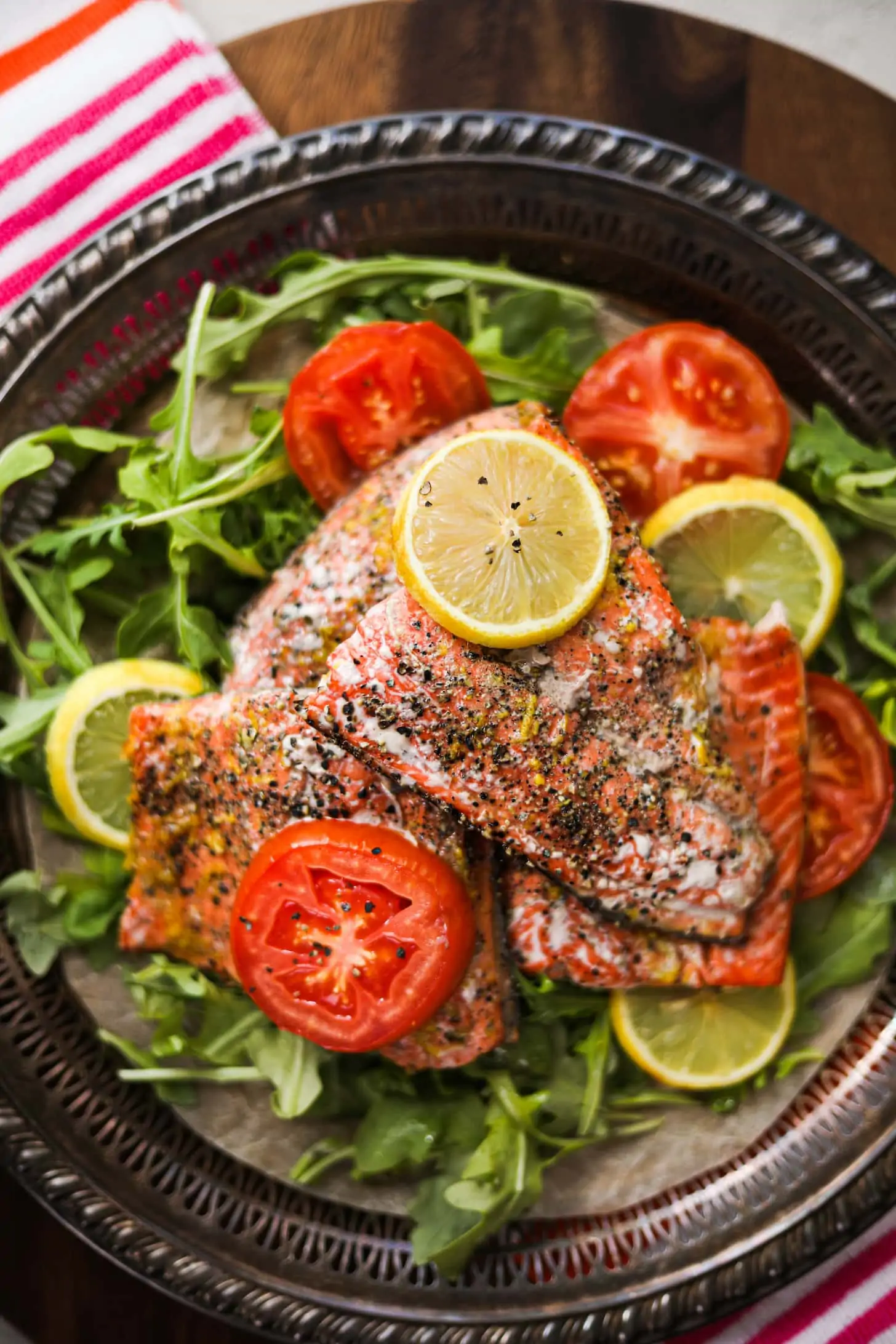
Salmon calories
A 100-gram portion of sockeye salmon has approximately 130 calories. The majority of these calories are derived from protein, with fat accounting for the rest. Uncooked sockeye salmon has no carbohydrates. Thus, it’s considered a low-carb food.
The number of calories in salmon will vary depending on the type of salmon (wild or farmed) and how it’s prepared and cooked.
Ingredients for sockeye salmon recipe
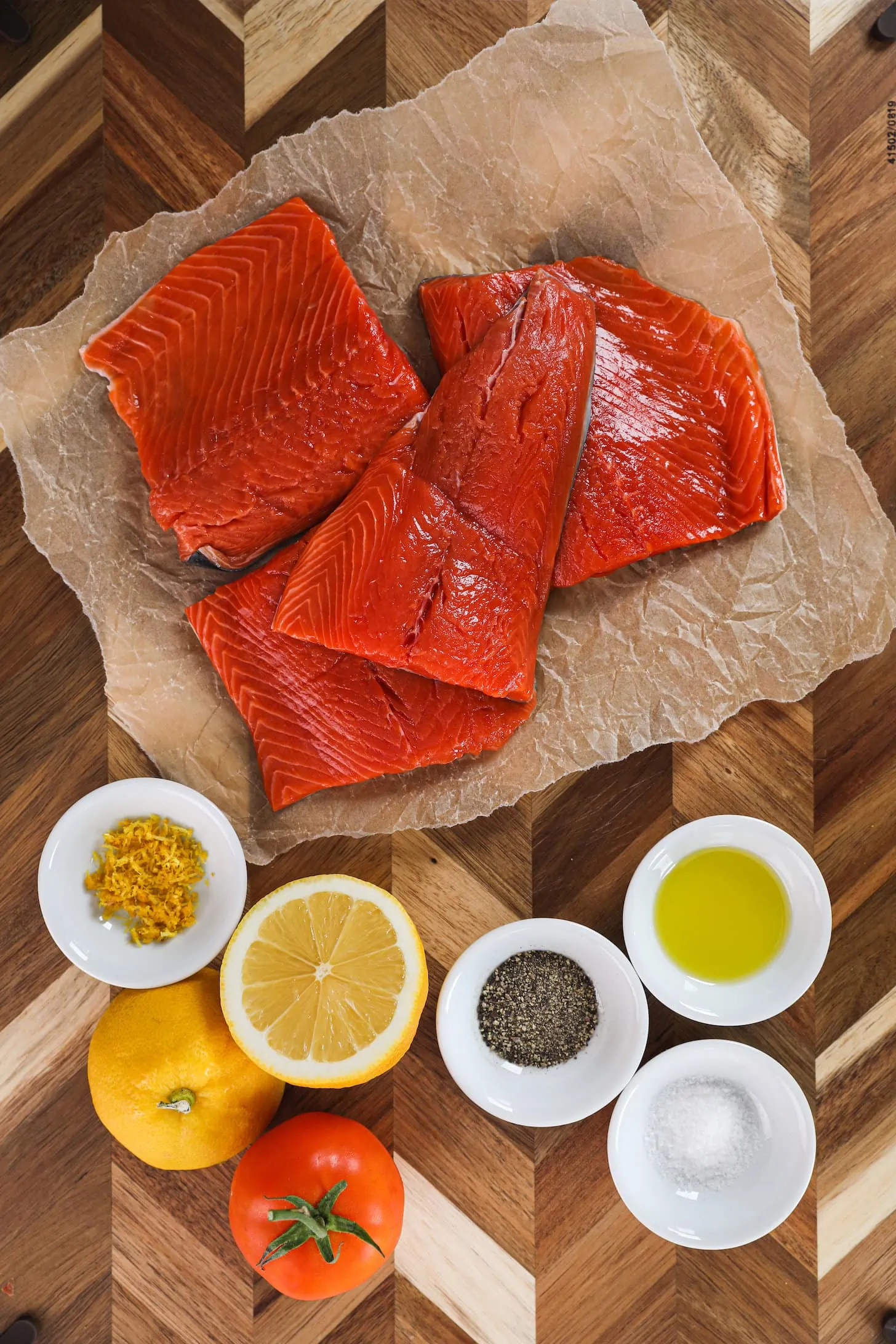
Only six ingredients are needed to make baked lemon pepper salmon. These include:
- Wild sockeye pink salmon: fresh salmon fillets work beautifully in this recipe. The result is a rich, velvety texture and a luscious flavour that’s hard to beat.
- Lemon: lemon is key for this recipe as it adds a lovely zingy flavour. Be sure to use fresh lemon juice rather than the bottled version for the best results. The zest is also used in the lemon pepper seasoning mix, as well as slices for garnish.
- Pepper: baked lemon pepper salmon wouldn’t be the same without pepper! I like to use freshly cracked black pepper, but you can also use pre-ground pepper if that’s what you have on hand.
- Salt: a little salt is needed to bring out the flavours of the lemon and pepper. I like to use sea salt.
- Olive oil: to coat the salmon fillets before baking. This prevents the lemon juice from making the salmon fillets too dry.
- Tomato: to top the fillets because it looks so pretty and also prevents the fillets from drying out.
Cooking wild caught salmon
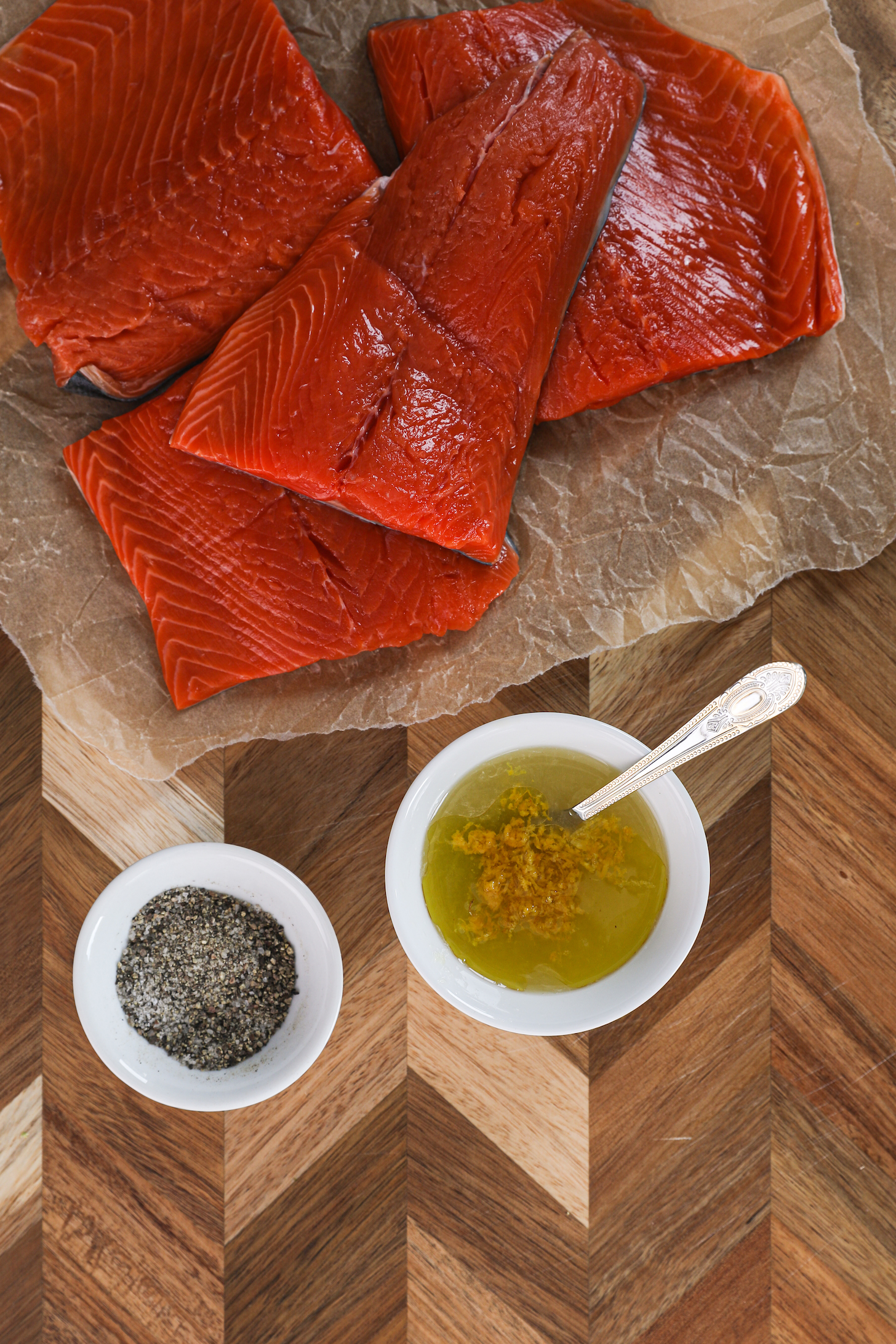
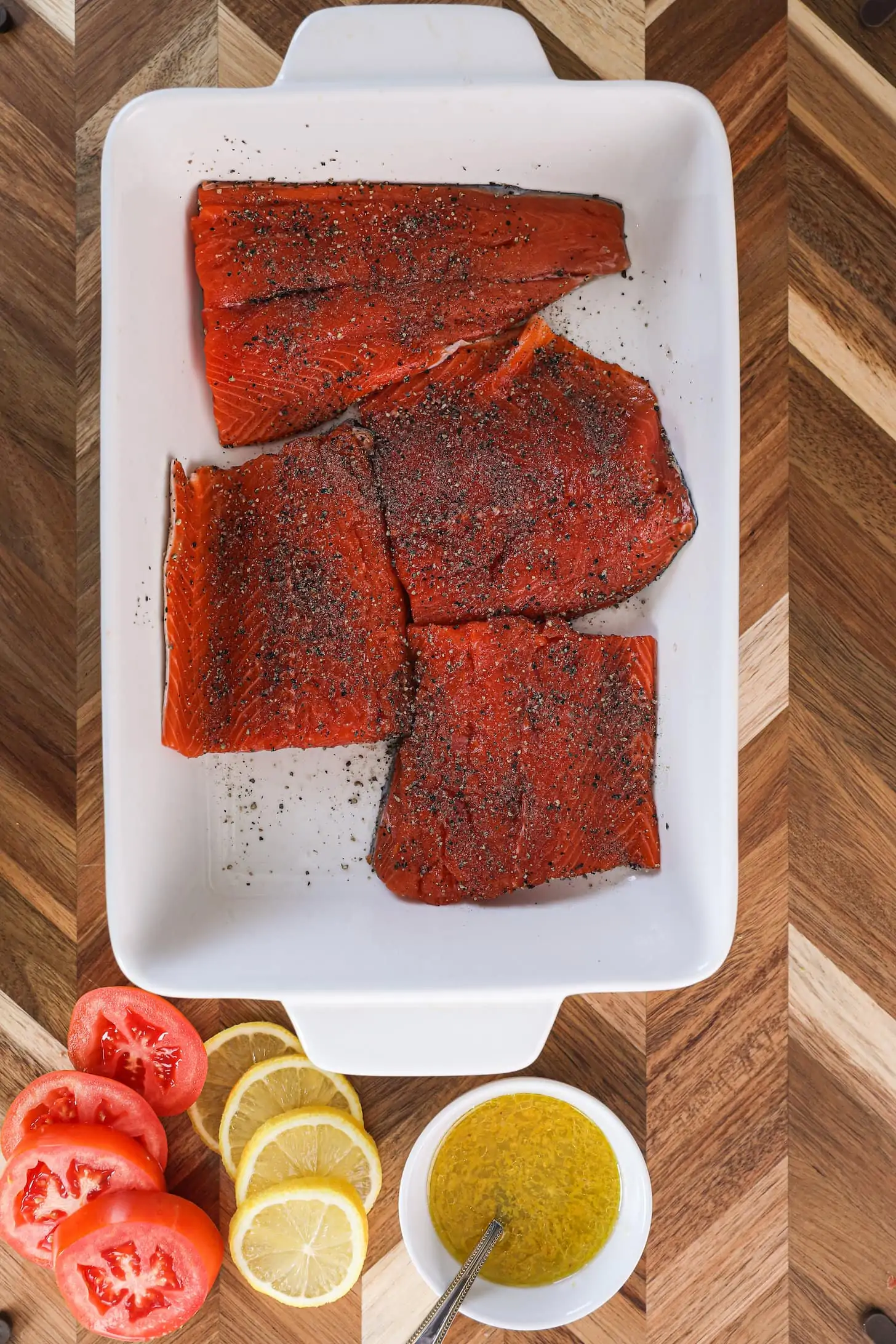
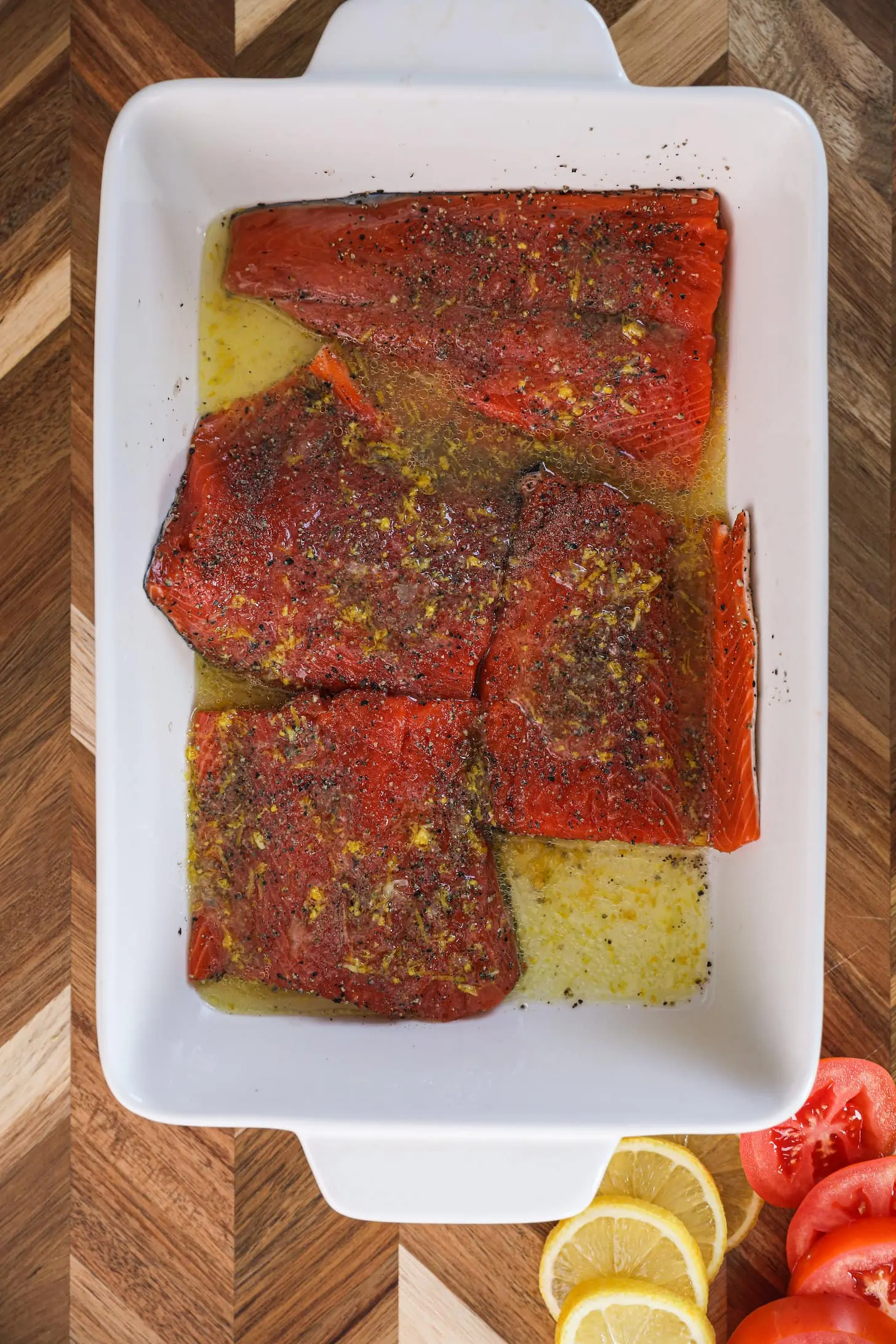
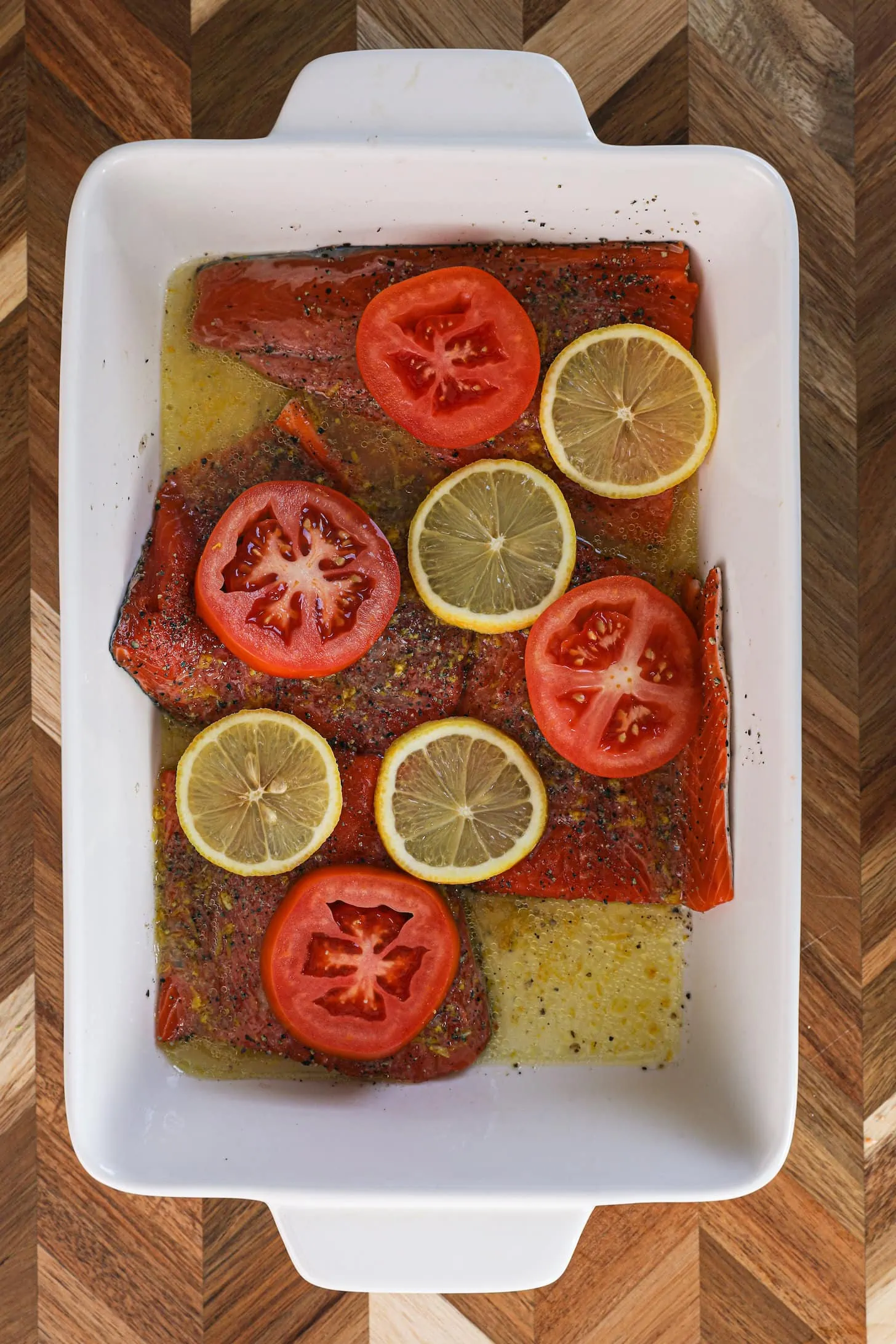
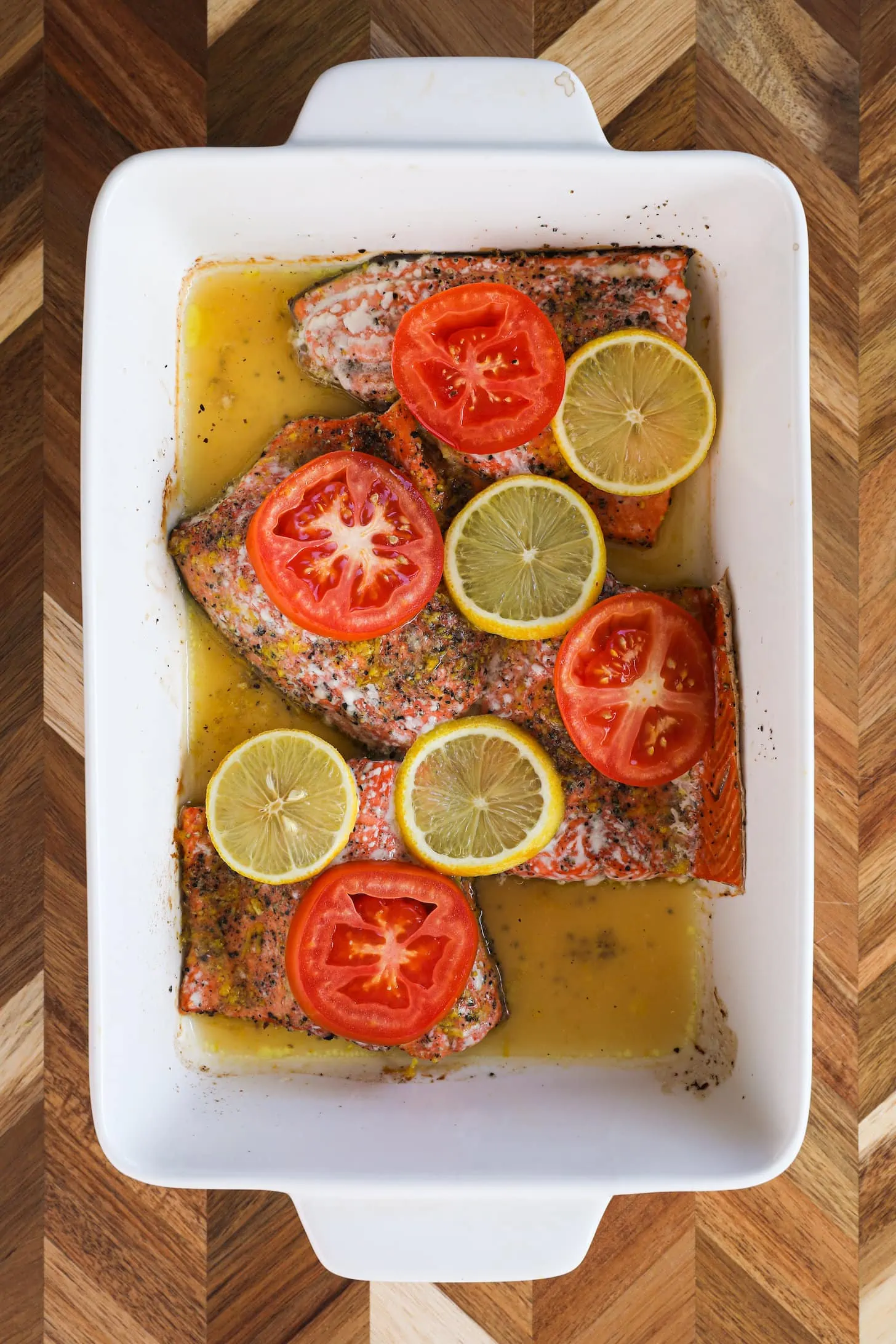
To begin, you want to ensure the salmon fillets are dry. Here are the steps for making easy lemon pepper salmon:
- Preheat the oven to 420 degrees.
- The first step is to combine the salt and pepper in a small ramekin.
- Then, mix the lemon juice, zest and olive oil in another ramekin.
- Next, place the salmon fillets in an oven-proof baking dish. It’s best not to overlap the fillets if they’re too thick.
- Then, season each fillet with the salt and pepper mixture on both sides.
- Arrange the salmon fillet skin down and pour the lemon juice mixture over the fillets and top with lemon and tomato slices.
- Send the lemon pepper salmon fillets to bake for 15 minutes or until the salmon is cooked through. The lemon pepper salmon is done when it flakes easily with a fork.
The complete recipe with step-by-step instructions and amounts can be found in the recipe card at the bottom of this post.
Baked salmon recipe tips and modifications
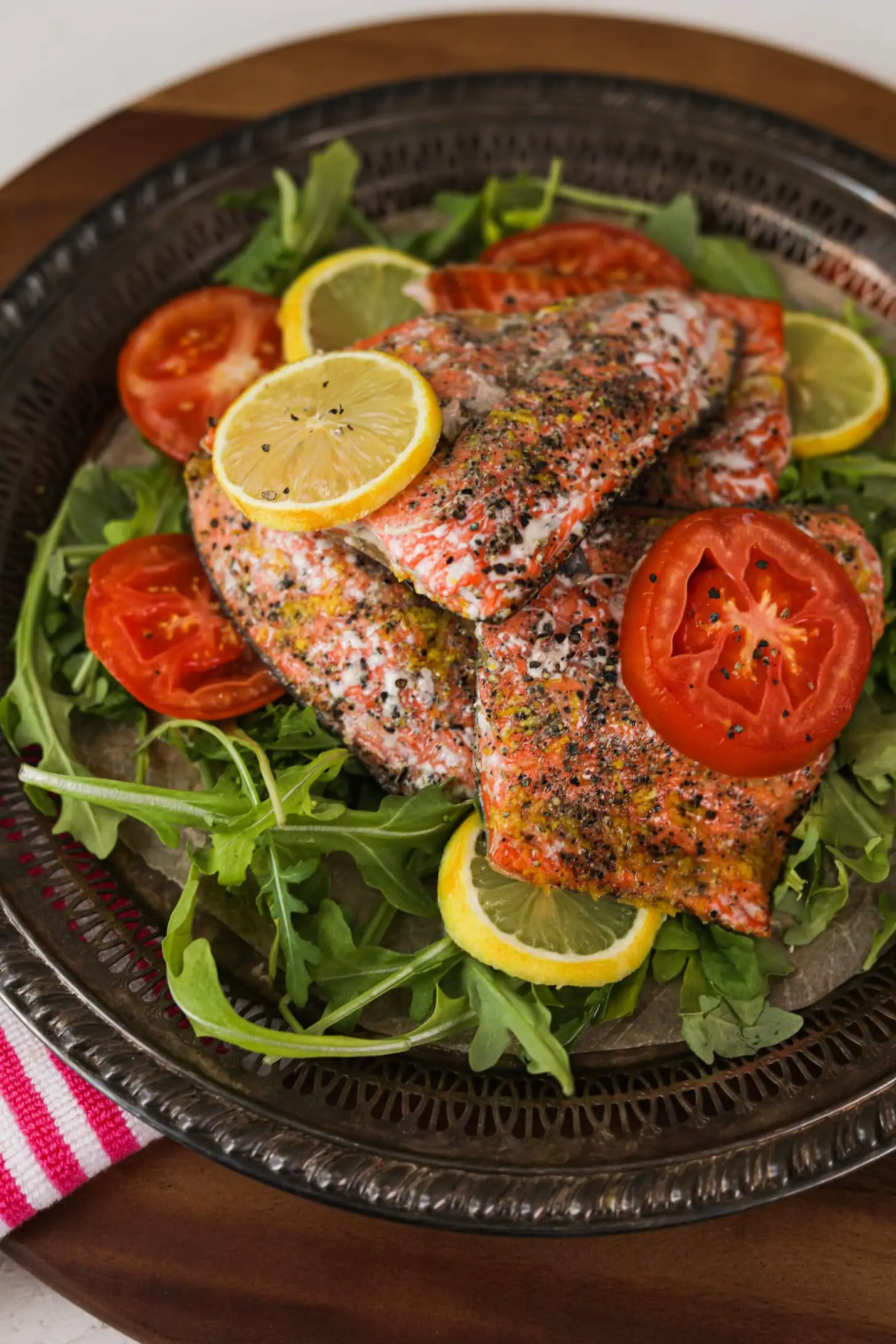
Here are some tips for making the best oven baked lemon pepper salmon:
- If you’re short on time, you can use store-bought lemon pepper seasoning mix. Simply omit the salt and pepper from the recipe, and sprinkle a spoon of lemon pepper seasoning in its place.
- It’s best to cut the salmon fillets into even-sized portions for the best cooking results.
- Depending on the thickness of your fillets, the salmon may need less or more time to cook through. As a general rule, you should aim for 10 minutes of cooking time for every inch of thickness.
- You can also swap out the lemon for lime if you prefer.
- Fresh herbs such as dill or parsley can be used in place of tomato slices for a different flavour profile.
- Maple syrup or honey can be used in place of olive oil if you’re looking for a slightly sweeter lemon pepper salmon recipe.
- For a South Asian twist, try using chaat masala instead of salt and pepper.
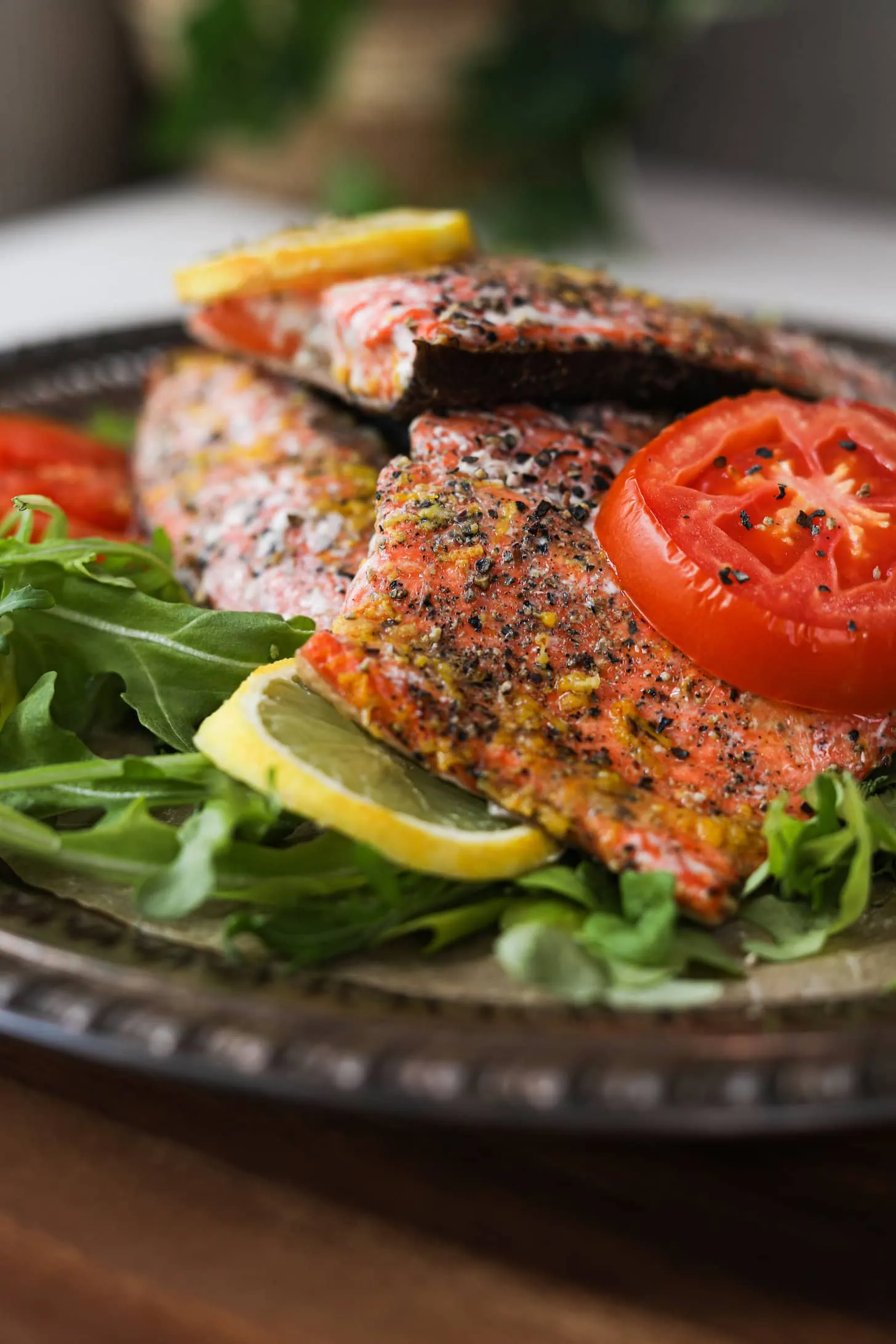
Serving suggestions
There are endless possibilities when it comes to sides for lemon pepper salmon. Here are a few of my favourites:
- Vegetables: grilled vegetables, roasted Brussels sprouts, and crispy baked sweet potato wedges, all pair nicely with lemon pepper salmon.
- Salads: an easy raw salad, air fryer eggplant salad, creamy avocado corn salad or kale Mediterranean salad would all be delicious companions.
- Grains: quinoa, paratha, rice or pasta would all be lovely bases for lemon pepper salmon.
Nutrition information per serving
One oven baked lemon pepper salmon fillet is:
- an exceptional source of protein (35 g per serving!)
- an excellent source of vitamin C (33% DV)
- a decent source of iron (11% DV)
- an excellent source of vitamin D
*Nutrient claims based on a 2000-calorie diet.
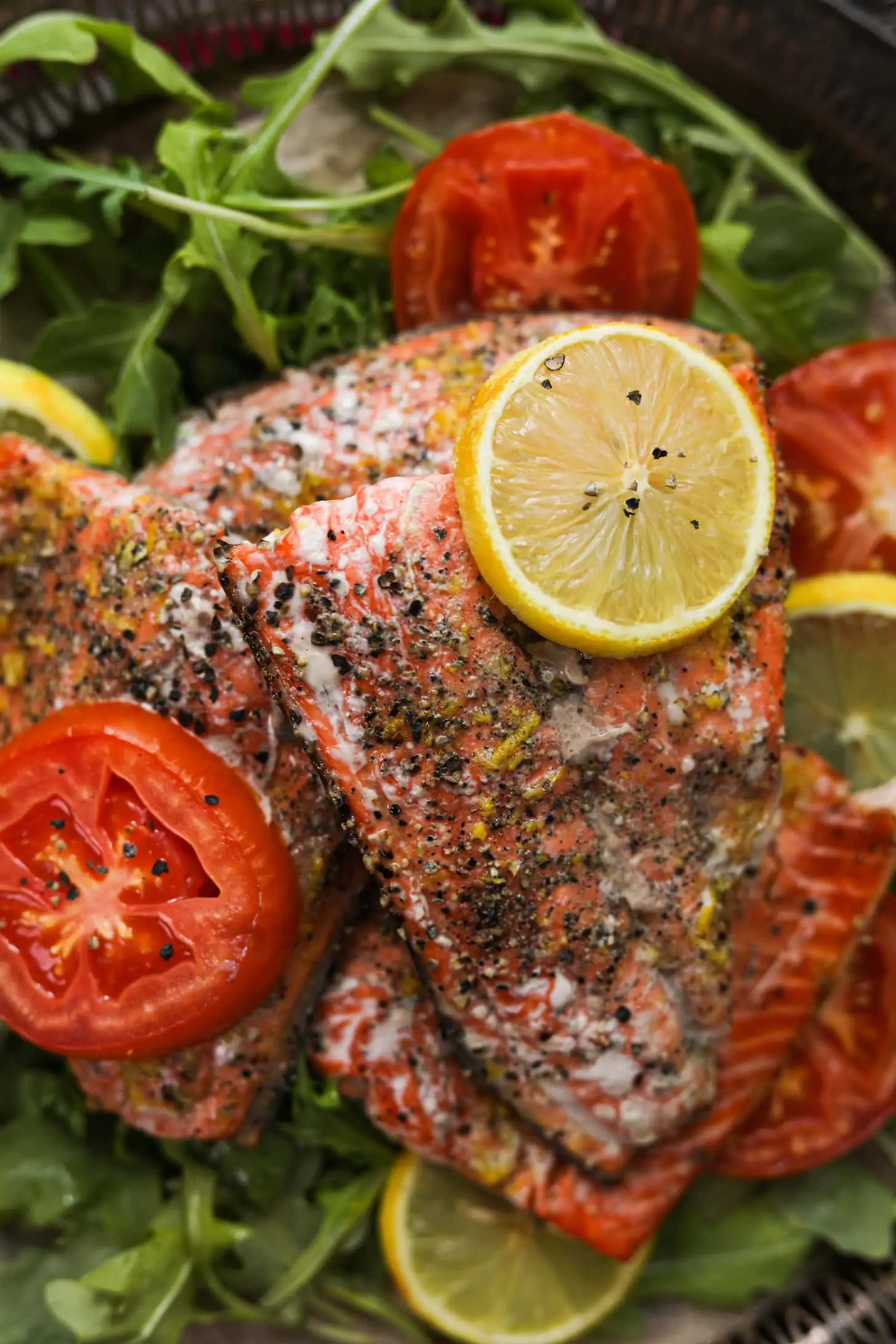
What are some of your favourite healthy meals for dinner?
If you try this sockeye salmon recipe, I would love to hear from you! Leave a comment, rate it, or share a photo and hashtag with #desiliciousrd on Instagram, Facebook and Twitter! I can’t wait to see your photos.
Ingredients
- 4 salmon fillets, MSC certified wild sockeye salmon, fresh, large fillets (approximately 490 grams).
- 1 tsp black pepper, coarse
- ⅔ tsp sea salt
- ½ tbsp lemon zest, zest of one medium lemon
- 1½ lemons, medium, juice of one lemon. Plus, half lemon is cut into slices for garnish
- 1 tomato, small, washed, cut into 4 thick slices for garnish
- ½ tbsp olive oil, extra virgin
Instructions
- Preheat the oven to 420 degrees.
- Combine the salt and pepper in a small ramekin.
- Mix lemon juice, zest and olive oil.
- Place the salmon fillets in an oven-proof baking dish. It's best not to overlap the fillets if they're too thick. Season each fillet with the salt and pepper mixture on both sides.
- Arrange the salmon fillet skin down and pour the lemon juice mixture over the fillets.
- Top the fillets with lemon and tomato slices and send to bake for 15 minutes or until the salmon is cooked through. The lemon pepper salmon is done when it flakes easily with a fork.
Notes
- If you’re short on time, you can use store-bought lemon pepper seasoning mix. Simply omit the salt and pepper from the recipe, and sprinkle a spoon of lemon pepper seasoning in its place.
- It’s best to cut the salmon fillets into even sized portions for best cooking results.
- Depending on the thickness of your fillets, the salmon may need less or more time to cook through. As a general rule, you should aim for 10 minutes of cooking time for every inch of thickness.
- You can also swap out the lemon for lime if you prefer.
- Fresh herbs such as dill or parsley can be used in place of tomato slices for a different flavour profile.
- Maple syrup or honey can be used in place of olive oil if you’re looking for a slightly sweeter lemon pepper salmon recipe.
- For a South Asian twist, try using chaat masala instead of salt and pepper.
Nutrition Information:
Keep in mind that the nutritional values provided are approximations and suggestions, and might fluctuate depending on ingredient variations, portion sizes, and recipe adjustments. This nutrition facts table cannot account for your individual needs. Your body — including your hunger and satiety cues — change daily. It’s perfectly fine to eat more or less on different days. Instead of letting food guilt take over, consider mindful eating.
* Percent Daily Values are based on a 2000 calorie diet.


